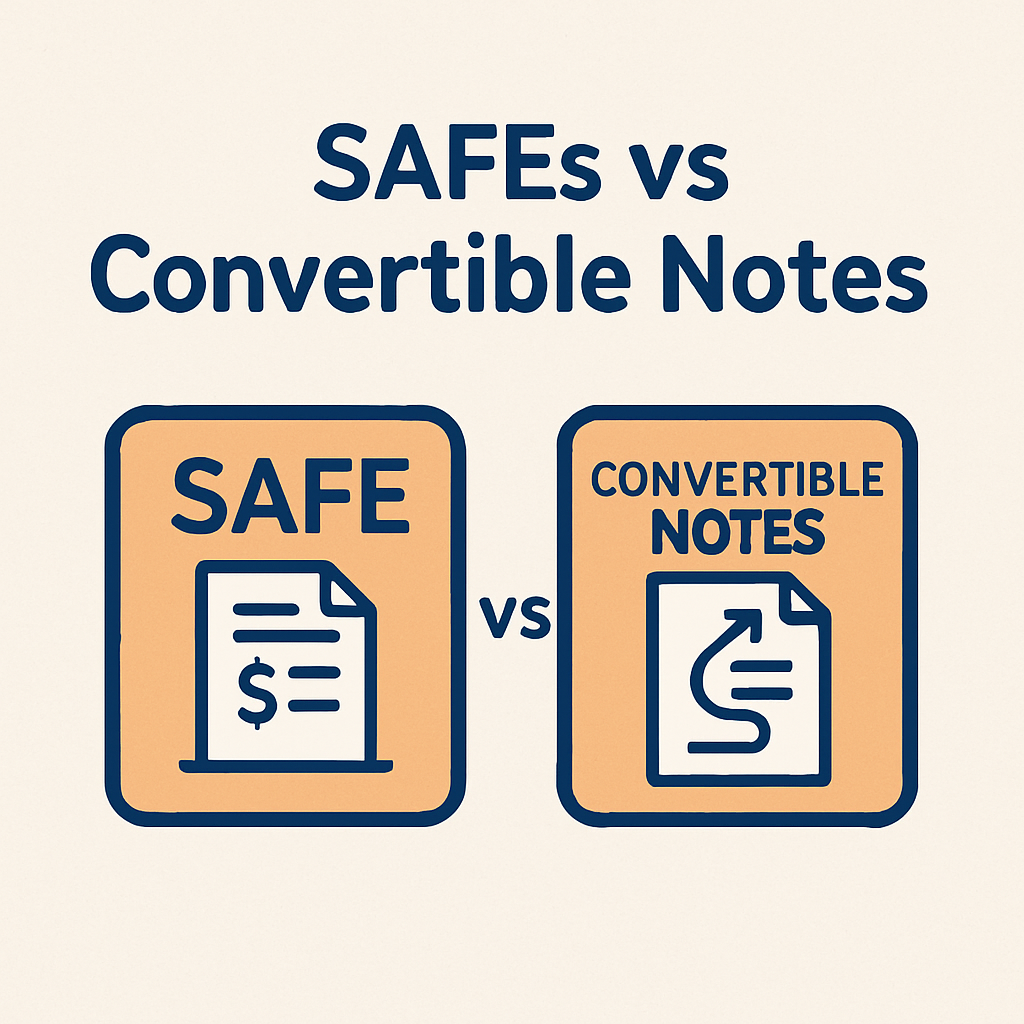
Learn the key differences between SAFEs and convertible notes for pre-seed and seed startup fundraising. Discover which option is best for your early-stage raise.

Jun 6, 2025

When you’re raising early-stage capital, simplicity, speed, and clarity are everything. Founders at the pre-seed and seed stage often ask:
“Should I raise on a SAFE or a convertible note?”
These tools help you bring in capital without setting a valuation right away—but they’re not interchangeable. If you’re a startup founder preparing for a raise, this guide will help you understand which path fits your stage, investor expectations, and budget strategy.
A SAFE (Simple Agreement for Future Equity) is a contract that converts investor money into equity at a future priced round. Created by Y Combinator, SAFEs have become the go-to for pre-seed funding.
Key features:
Use a SAFE if you want:
✅ Fast, low-cost fundraising
✅ Simplicity for early angel or accelerator rounds
✅ To avoid debt obligations
A convertible note is a form of convertible debt that acts as a loan, with the expectation that it will convert into equity later.
Key features:
Use a convertible note if you need:
✅ More investor protection
✅ A bridge round before a Series A
✅ Legal or tax structure flexibility (especially with non-U.S. investors)
For most U.S.-based early-stage founders, a post-money SAFE is the better option. It’s:
But if you’re raising a bridge round, facing investor pressure, or dealing with international legal constraints, a convertible note might still make sense.
🔎 Related search terms:
Even though neither instrument gives investors equity immediately, they do impact your financials.
📊 We help startups set up their books and budgets so there are no surprises at your next investor meeting. If you’re not tracking runway or cap table impact correctly, your raise can get messy—fast.
Our recommendation for pre-seed and seed founders:
✅ Use a post-money SAFE unless a convertible note is required for legal or investor reasons.
It’s founder-friendly, fast, and aligns well with the way most early-stage capital is raised today.
Whether you’re raising with a SAFE or a note, we help founders:
📅 Ready to clean up your financials before your next raise?
© 2025 Startup Accountant. All Rights Reserved.